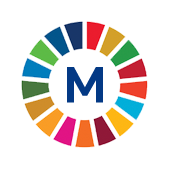 7.1.2 Proportion of population with primary reliance on clean fuels and technology, by wealth index quintilesMetadataPeriod: Every four yearsYear: 2025 |
 7.1.2 Proportion of population with primary reliance on clean fuels and technology, by wealth index quintilesMetadataPeriod: Every four yearsYear: 2025 |
| METADATA |
| Indicator information |
| Definition and methodology |
| Data source type and data collection method |
| Notes |
| ID of global indicator |
| Metadata update |
| Global metadata |
| Indicator information | Top |
| Indicator | |
7.1.2 Proportion of population with primary reliance on clean fuels and technology, by wealth index quintiles | |
| Global indicator name | |
7.1.2 Proportion of population with primary reliance on clean fuels and technology | |
| Target | |
7.1 By 2030, ensure universal access to affordable, reliable and modern energy services | |
| Goal | |
Goal 7. Ensure access to affordable, reliable, sustainable and modern energy for all | |
| Definition and methodology | Top |
| Definition | |
Percentage of household members who use clean fuels and technologies as their primary energy source for all three forms of consumption: cooking, heating, and lighting. | |
| Methodological explanations | |
Clean fuel is defined by the emission rate targets and specific fuel recommendations, included in the normative guidance WHO guidelines for indoor air quality.
Clean cooking fuels and technologies include: any of the following (electric stove/hotplate, solar stove, gas stove/bottle/LPG, mains gas stove, biogas stove, no food is cooked in the household) or if a liquid fuel stove using alcohol/ethanol is used.
Clean heating fuels and technologies include: central heating or electrical appliances (air conditioner, electric radiators, convectors, TA stoves, etc.) or if there is no heating in the household or if any of the following energy sources are used for heating: solar energy, electricity, mains gas, liquefied petroleum gas (LPG)/bottle/gas, biogas, alcohol ethanol.
Clean lighting fuels and technologies include: electricity, solar lantern; rechargeable flashlight, flashlight/lamp (without battery); flashlight, lantern; biogas lamp or if there is no lighting in the household.
The Multiple Indicator Cluster Survey (MICS) is a global survey by UNICEF. The MICS Serbia surveys are based on a representative sample of households, women and children and were conducted throughout the territory of Serbia, except for the territory of Kosovo and Metohija. The data are from the MICS 2019 survey (MICS VI). As a special sample, the survey included households in Roma settlements.
MICS publications and research archives can be found at https://www.stat.gov.rs/istrazivanja/mics. The research archives contain final reports, databases, programs for calculating indicators, sample information and more. For more information on monitoring the situation of children and women and the global MICS program, see https://mics.unicef.org | |
| Method of calculation | |
The number of household members using clean fuels and technologies as their primary source of energy for cooking, heating and lighting is divided by the number of members in all households and multiplied by 100.
The unit of observation is the members of all surveyed households. | |
| Unit of measure | |
% | |
| Available disaggregation | |
Wealth index quintiles | |
| Territorial level | |
Regions | |
| Data source type and data collection method | Top |
| Data source | |
Multiple Indicator Cluster Survey (MICS) | |
| Periodicity of data collection | |
Every four years | |
| Notes | Top |
| ID of global indicator | Top |
C070102 | |
| Metadata update | Top |
| 2/6/2025 | |
| Global metadata | Top |
https://unstats.un.org/sdgs/metadata/files/Metadata-07-01-02.pdf | |